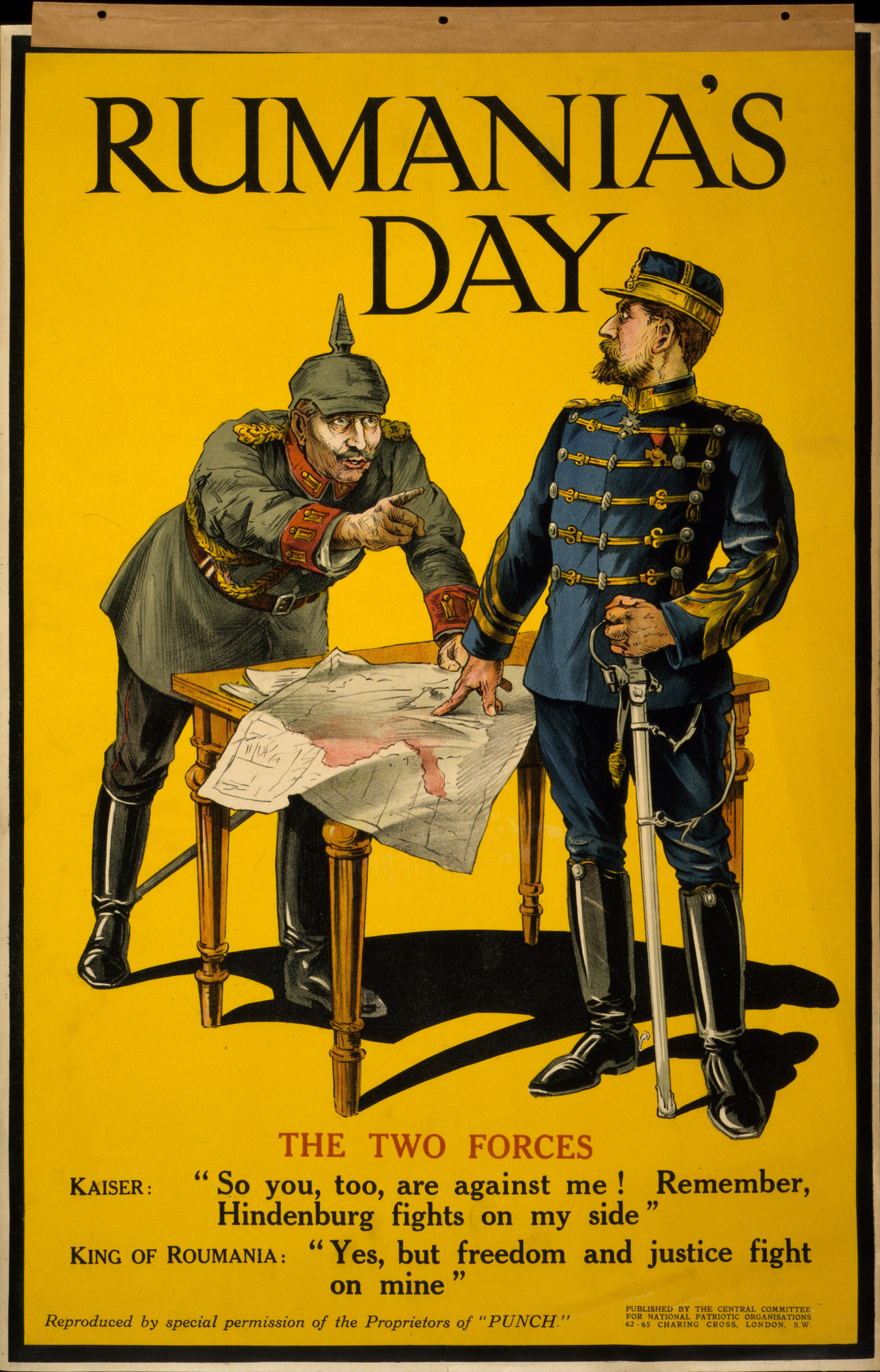
Diplomatic history of World War I
The diplomatic history of World War I covers the non-military interactions among the major players during World War I. For the domestic histories of participants see home front during World War I. For a longer-term perspective see international relations (1814–1919) and causes of World War I. For the following (post-war) era see international relations (1919–1939). The major "Allies" grouping included Great Britain and its empire, France, Russia (until 1917), Italy (from 1915) and the United States (from 1917). Opposing the Allies, the major Central Powers included Germany, Austria-Hungary, the Ottoman Empire (Turkey) and Bulgaria. Other countries (Belgium and Japan, for example) also joined the Allies. For a detailed chronology see timeline of World War I.
Non-military diplomatic and propaganda interactions among the belligerents aimed to build support for one's cause or to undermine support for one's enemies.[1][2] Wartime diplomacy focused on five issues:
The total direct cost of war, for all participants including those not listed here, was about $80 billion (in 1913 US dollars) Since $1 billion in $1913 = about $25 billion in 2017 US dollars the total cost comes to about $2 trillion in 2017 dollars. Direct cost is figured as actual expenditures during war minus normal prewar spending. It excludes postwar costs such as pensions, interest, and veteran hospitals. Loans to/from allies are not included in "direct cost." Repayment of loans after 1918 is not included.[34]: 1, 21–37
The total direct cost of the war as a percent of wartime national income:
The amounts listed below are presented in terms of 1913 US dollars, where $1 billion then equals about $25 billion in 2017.[34]: 21–37
In 1914 Britain had by far the largest and most efficient financial system in the world.[36] Roger Lloyd-Jones and M. J. Lewis argue:
The two governments agreed that financially Britain would support the weaker Allies and that France would take care of itself.[38] In August 1914, Henry Pomeroy Davison, a Morgan partner, traveled to London and made a deal with the Bank of England to make J.P. Morgan & Co. the sole underwriter of war bonds for Great Britain and France. The Bank of England became a fiscal agent of J.P. Morgan & Co., and vice versa. Over the course of the war, J.P. Morgan loaned about $1.5 billion (approximately $27 billion in today's dollars) to the Allies to fight against the Germans.[39]: 63 Morgan also invested in the suppliers of war equipment to Britain and France, thus profiting from the financing and purchasing activities of the two European governments. Britain made heavy loans to Tsarist Russia; the Lenin government after 1920 refused to honor them, causing long-term issues.[40]
In late 1917 Colonel House, President Wilson's representative, took the lead in organizing Allied non-military actions.[41] Operating under the authority of the Supreme War Council, new committees had specialized tasks. The Inter-Allied Finance Council handled the issues of distributing money among the Allies. The United States had virtually all the available money by 1917, and made all the decisions. It loaned large sums to the main players, including loans to England that were redistributed to smaller allies.[42] There were related councils dealing with purchases food, and shipping, including the Allied Council on War Purchases and Finance, the Inter–Allied Food Council, the Inter-Allied Meat and Fats Executive, the Inter-Allied Scientific Food Commission, the Inter–Allied Maritime Council, and the Inter–Allied Transport Council, among others.[43]